Want the portability of a smartphone but a big screen like a laptop? The humble tablet remains the ideal solution.
While most people don’t use them as their primary productivity device, there are plenty of compelling reasons to buy one, whether you’re looking to get work done, play games or just browse the web.
However, there are loads of options to choose from in 2025. We review dozens of tablets every year, but have narrowed it down to the top 10. At the bottom of the article, you’ll also find detailed buying advice.
This article caters to a range of different budgets, but if you’re specifically looking for something affordable, see our guide to the best budget tablets.
It’s worth noting that the latest 10.9-inch iPad is missing from this list, but look out for our review of that soon.
Best tablet 2025
1. Apple iPad Air (2025) – Best Tablet Overall
Pros
- Excellent performance
- Premium design
- Great battery life
- Portable, lightweight build
- Slick iPadOS software
Cons
- Slow charging
- No Face ID
- Only 60Hz LCD display
- Accessories not included
Price When Reviewed:
$599
Equipped with Apple’s M3 processor, it delivers incredible performance in basically every scenario. Coupled with strong battery life and the premium yet lightweight design we’ve come to expect from the iPad Air, there’s a lot to like here.
With LCD rather than OLED and just a 60Hz refresh rate, the display might seem like a downside, but in day-to-day usage it’s still mightily impressive.
You will have to compromise in the charging department, though, while the lack of Face ID or any included accessories are frustrating.
On the software side, iPadOS continues to offer the best user experience on any tablet, with loads of dedicated apps and prompt updates for years to come.
If you’re looking for a premium tablet that strikes a balance between features and price, the iPad Air is a great choice.
Read our full
Apple iPad Air 11-inch (M3, 2025) review
2. Xiaomi Pad 7 – Best Budget Tablet
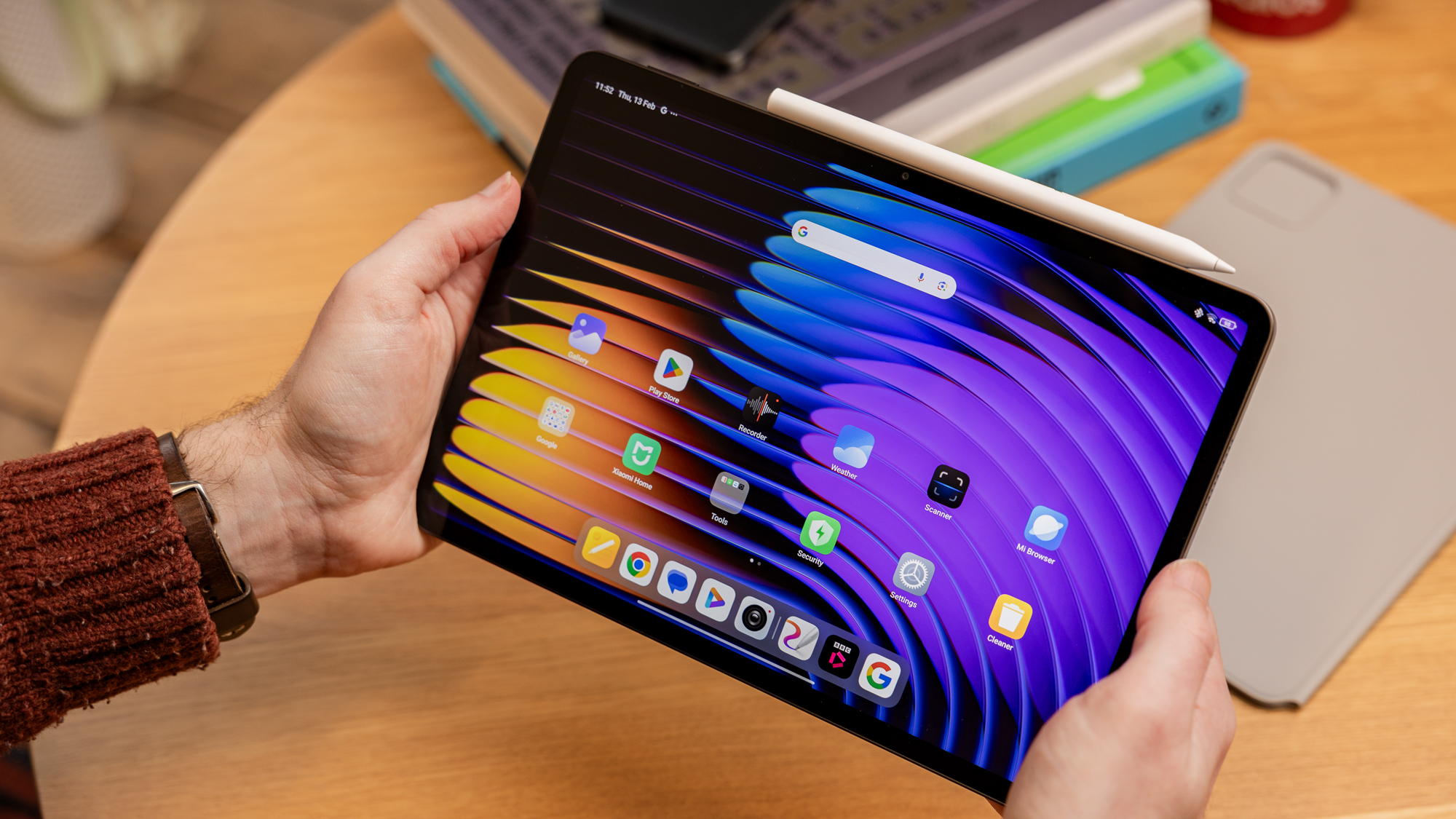
Pros
- Premium build
- Excellent screen
- Solid performance
- Range of accessories
Cons
- No fingerprint scanner
- Mediocre AI implementation
- Not available in the US
Price When Reviewed:
$499
Best Prices Today:
Don’t want to pay high-end prices but still want a premium tablet? Go for the Xiaomi Pad 7 – you won’t be disappointed.
For just £369 at launch (sadly unavailable in the US), you can get a high-end build, gorgeous 11-inch display and strong performance from the Snapdragon 870 chipset. Throw in solid battery life and decent charging speeds, and Xiaomi is onto a winner.
While no accessories are included in the price, the keyboard cases (two to choose from) and Focus Pen stylus are all very impressive, too.
A rather patchy software experience from Xiaomi’s HyperOS Android skin remains the big compromise, though it’s still very usable. You’ll also have to make do without a fingerprint scanner, but that’s easy to look beyond at this price
Overall, the Xiaomi Pad 7 offers a compelling, premium tablet experience for less than half the price of many rivals, making it a great buy.
Read our full
Xiaomi Pad 7 review
3. OnePlus Pad 2 – Best Mid-Range Tablet
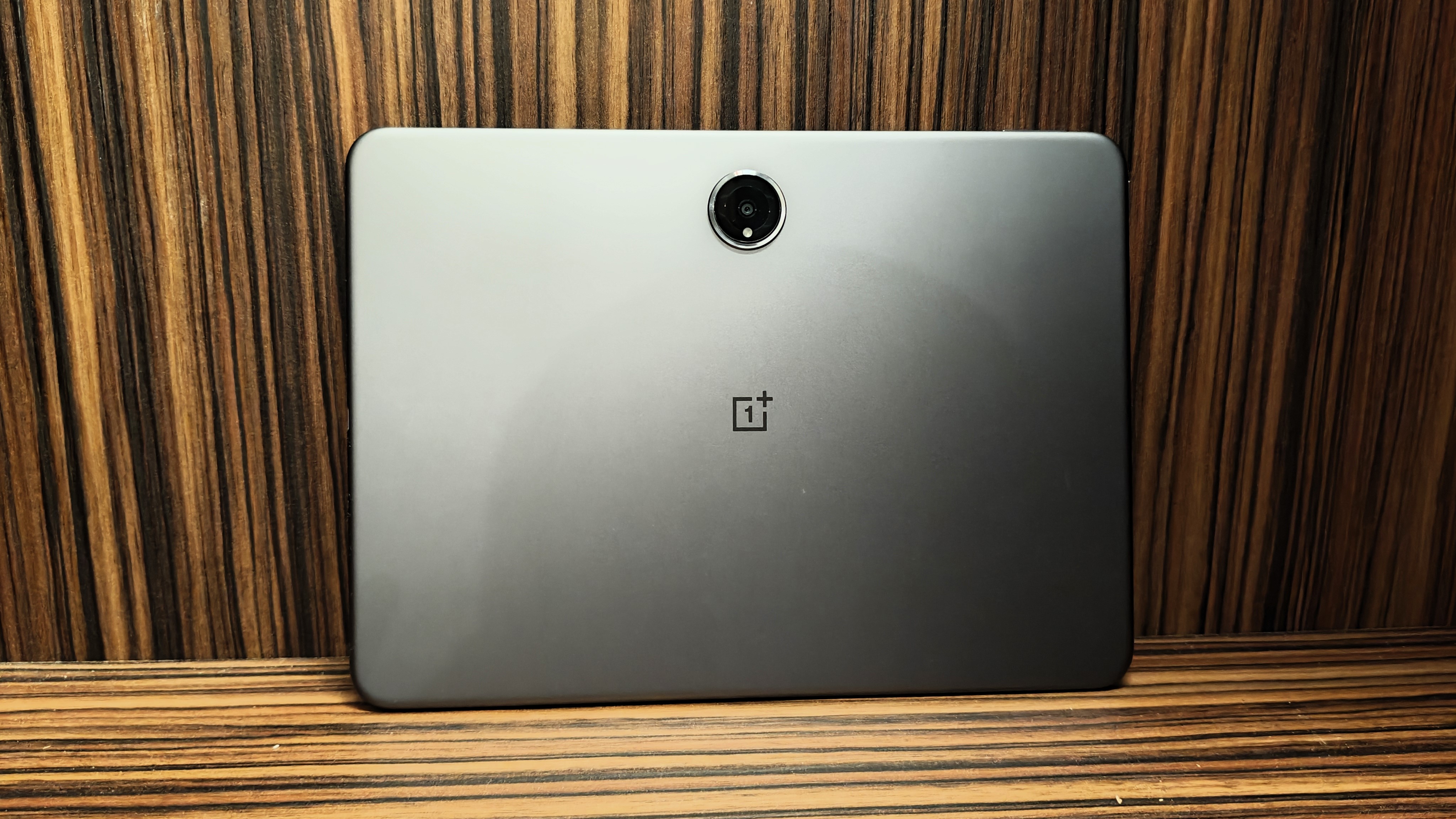
Pros
- Great performance for the price
- Comfortable, elegant design
- Good display and sound
- Excellent battery life
Cons
- It could be even faster
- Mediocre cameras
- Poor desktop mode
Price When Reviewed:
$549.99
Best Prices Today:
If you want something more than a budget slate but aren’t willing to pay flagship prices, look no further than the OnePlus Pad 2.
At launch, it costs just £499/$549.99, yet offers everything most people want from an Android tablet and more. That includes true flagship-level performance from the Snapdragon 8 Gen 3 chipset, even if benchmarks suggest a slight drop-off compared to flagship phones.
The lack of an OLED display doesn’t really feel like a compromise, with a highly capable 144Hz LCD one in its place. It’s housed within a premium yet elegant design that will stand the test of time, especially with OnePlus offering three years of OS updates and four years of security patches.
The software out of the box is also decent, with a few features that take advantage of the large display, while battery life is another key strength.
Its main weaknesses arrive in the form of forgettable cameras and a disappointing desktop-style mode when you connect it to an external display. But these are easy to overlook when you’re paying relatively little and getting so much.
However, the OnePlus Pad 3 is confirmed to launch soon, so you might want to wait for that.
Read our full
OnePlus Pad 2 review
4. Apple iPad Pro 12.9in (2024) – Best Tablet for Creatives
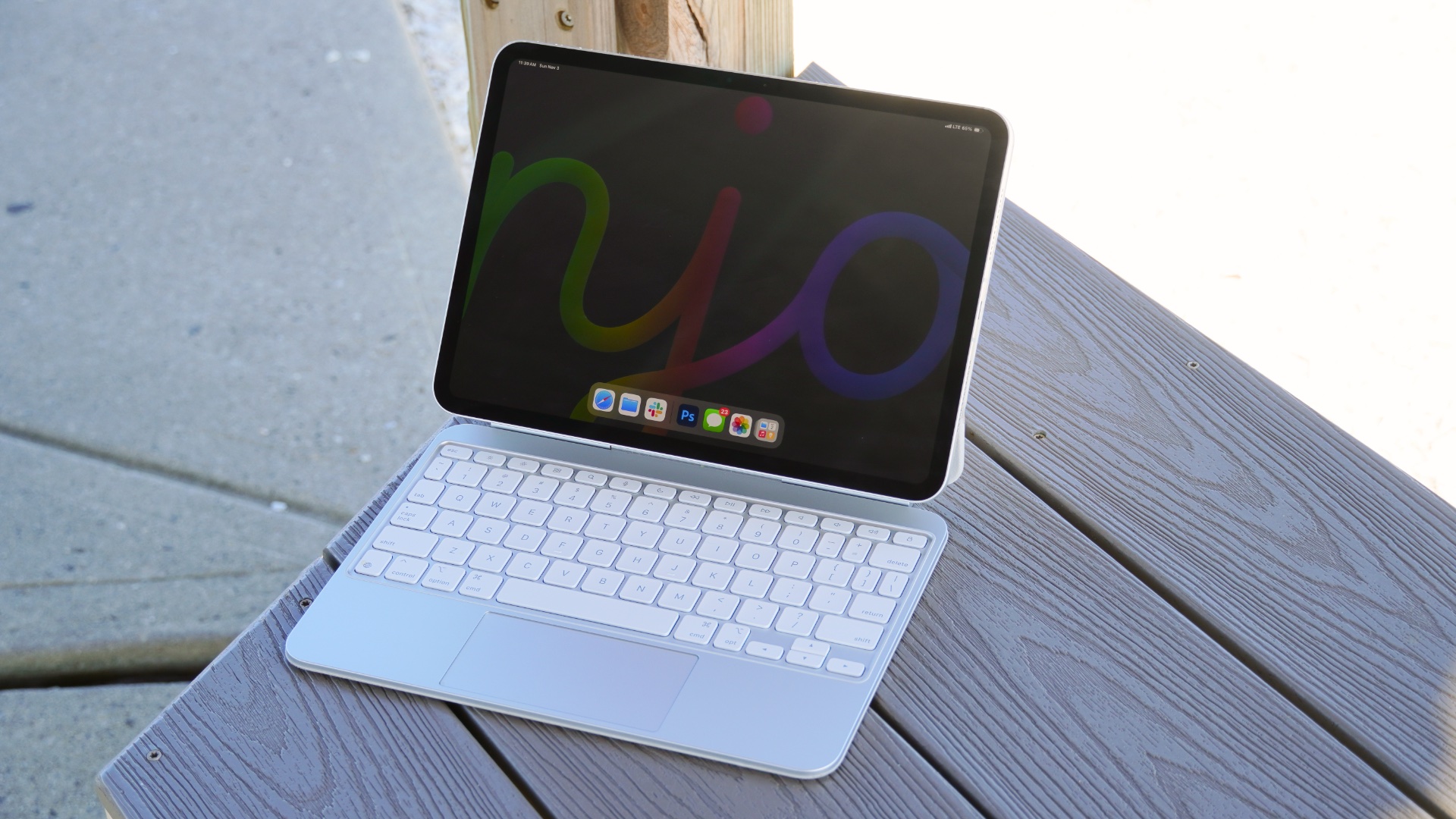
Pros
- Blazing fast performance
- Display is stunning
- Plenty of support for creative apps
- Excellent redesigned Magic Keyboard
Cons
- iPadOS still less suitable for productivity than macOS
- Some thermal issues
- Expensive
Price When Reviewed:
$999 (Wi-Fi only)
If you want the absolute best tablet money can buy, it’s probably the latest iPad Pro. But for most people, the upgrade compared to the iPad Air isn’t enough to justify the higher price tag.
Like the Air, the Pro is also available in 11- and 13-inch sizes. However, it’s the move to OLED that sets the screens apart, delivering incredibly vibrant colours and deep blacks.
You also get Apple’s M4 chip, which is incredibly fast and reliable in basically every scenario. An impressive new Magic Keyboard and loads of dedicated apps make this a brilliant tablet for creatives.
But is that you? If not, you’ll probably be just as happy with the Air or a MacBook if productivity is your top priority. At this price, it’s simply not worth it for most people.
However, for the right person, the iPad Pro is a stellar tablet.
Read our full
Apple iPad Pro 11-inch (M4, 2024) review
5. Samsung Galaxy Tab S10 Ultra – Best Big Tablet
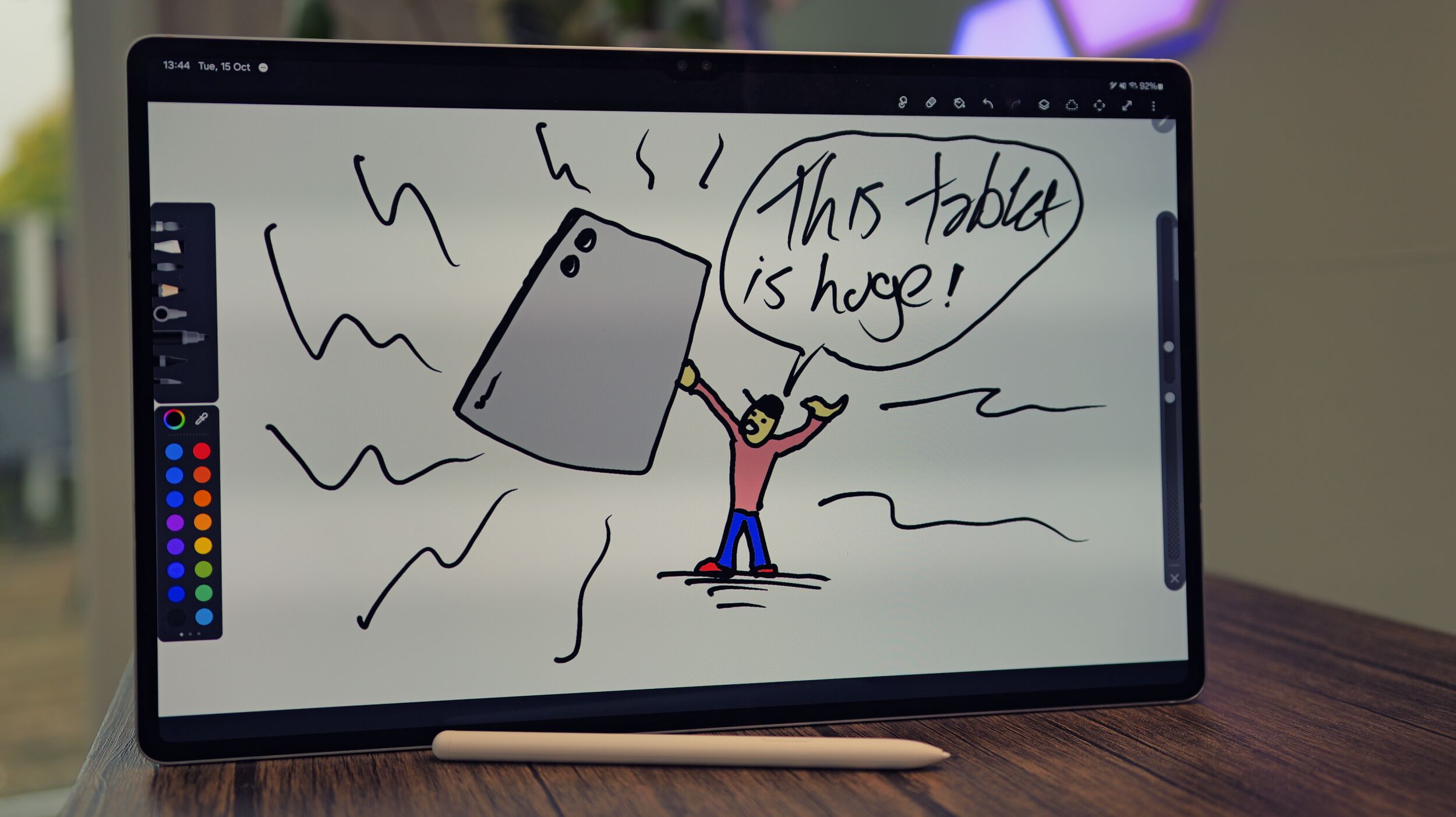
Pros
- Stunning 14.6in display
- Top-tier performance
- Impressive speakers
- Good front cameras
Cons
- Very expensive
- No charger in the box
- Thin bezel means accidental touches
Price When Reviewed:
From $1,199.99
Samsung’s huge tablet is very expensive and not suitable for everyone. But if you want a huge 14.6-inch canvas to work with and prefer Samsung tablets to iPads, it’s a compelling choice.
That large display is a gorgeous 120Hz OLED, which works in tandem with excellent speakers to deliver a top-tier video-watching experience. Ditching Qualcomm for the MediaTek Dimensity 9300+ doesn’t compromise performance, which is fast and reliable across all tasks, including gaming.
The included S Pen is a great option for digital art or handwritten notes, while the optional keyboard accessory makes it a realistic laptop alternative.
The lack of dedicated Android tablet apps still holds the tablet back, though, despite Samsung’s One UI delivering a strong overall software experience. Battery life is solid, but there’s no charger included, and a full charge will take well over an hour.
Ultimately, the Tab S10 Ultra is very similar to last year’s Tab S9 Ultra, with hit-and-miss AI features being the most significant difference. But if you want the very best big Android tablet on the market, this is it.
Read our full
Samsung Galaxy Tab S10 Ultra review
6. Honor Pad V9 – Great Affordable Tablet
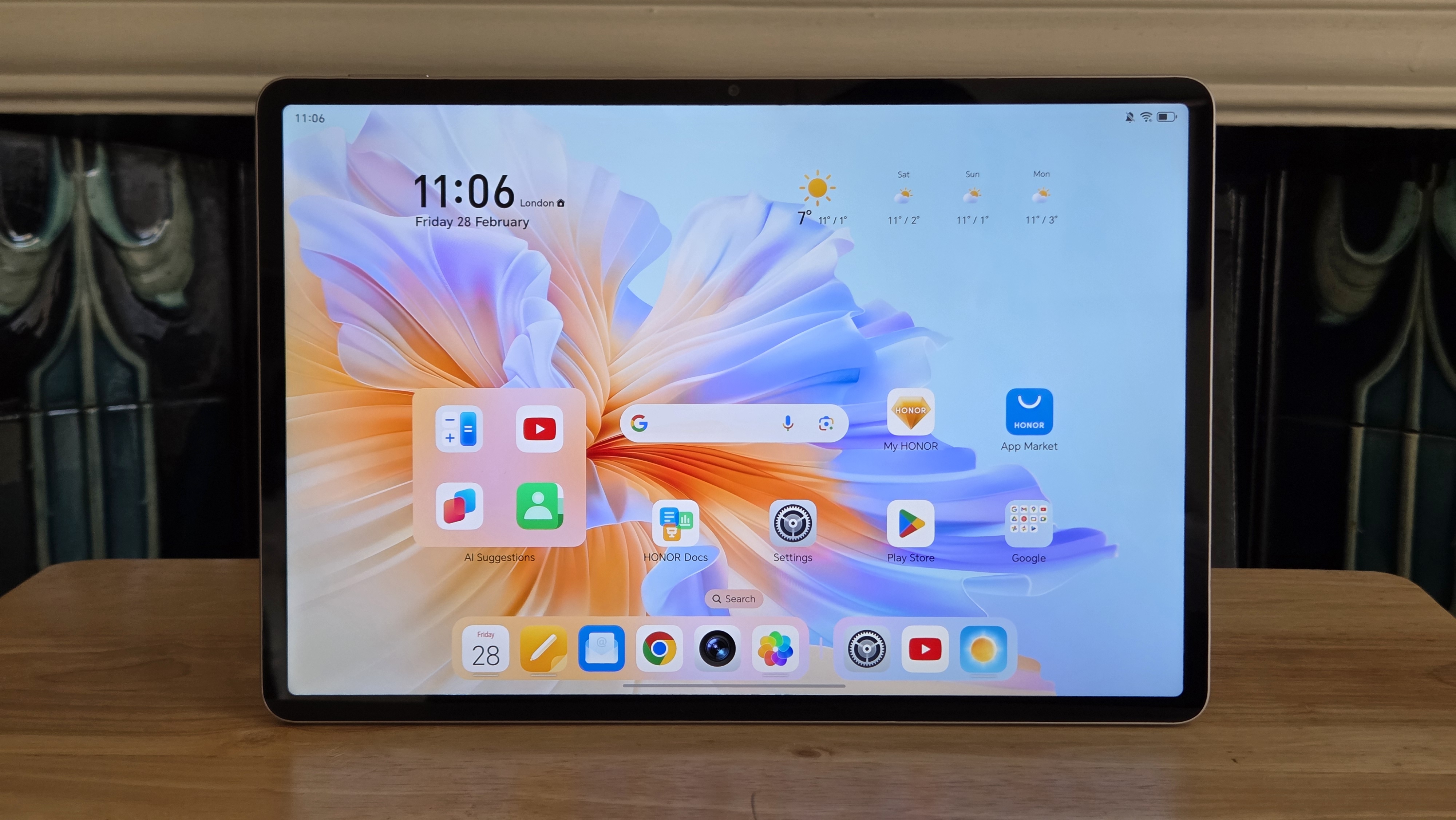
Pros
- Gorgeous display
- Great speakers
- Premium design
- Solid performance
Cons
- Disappointing cameras
- Unconfirmed software updates
- Not available in the US
Price When Reviewed:
Not available in the US
The Honor Pad V9 is a rare case of a mid-range tablet that has almost no compromises. Unless you need strong cameras or long-term software support, the Pad V9 ticks pretty much all the boxes.
We’re talking a stunning 11.5-inch display and an impressive eight-speaker setup, which combine for a great experience while watching movies and TV. A premium yet lightweight design means you can take it most places with you, especially with superb battery life.
Elsewhere, MediaTek’s Dimensity 8350 Elite delivers great performance, and Honor’s MagicOS skin over Android offers a slick, intuitive user experience. If only we knew how long it’d be supported with updates, or how promptly we might get Android 16.
But even without that, the Honor Pad V9 is easy to recommend in any country where it’s available. Sadly, that doesn’t include the US.
7. Samsung Galaxy Tab A9 – Best Tablet Under £200
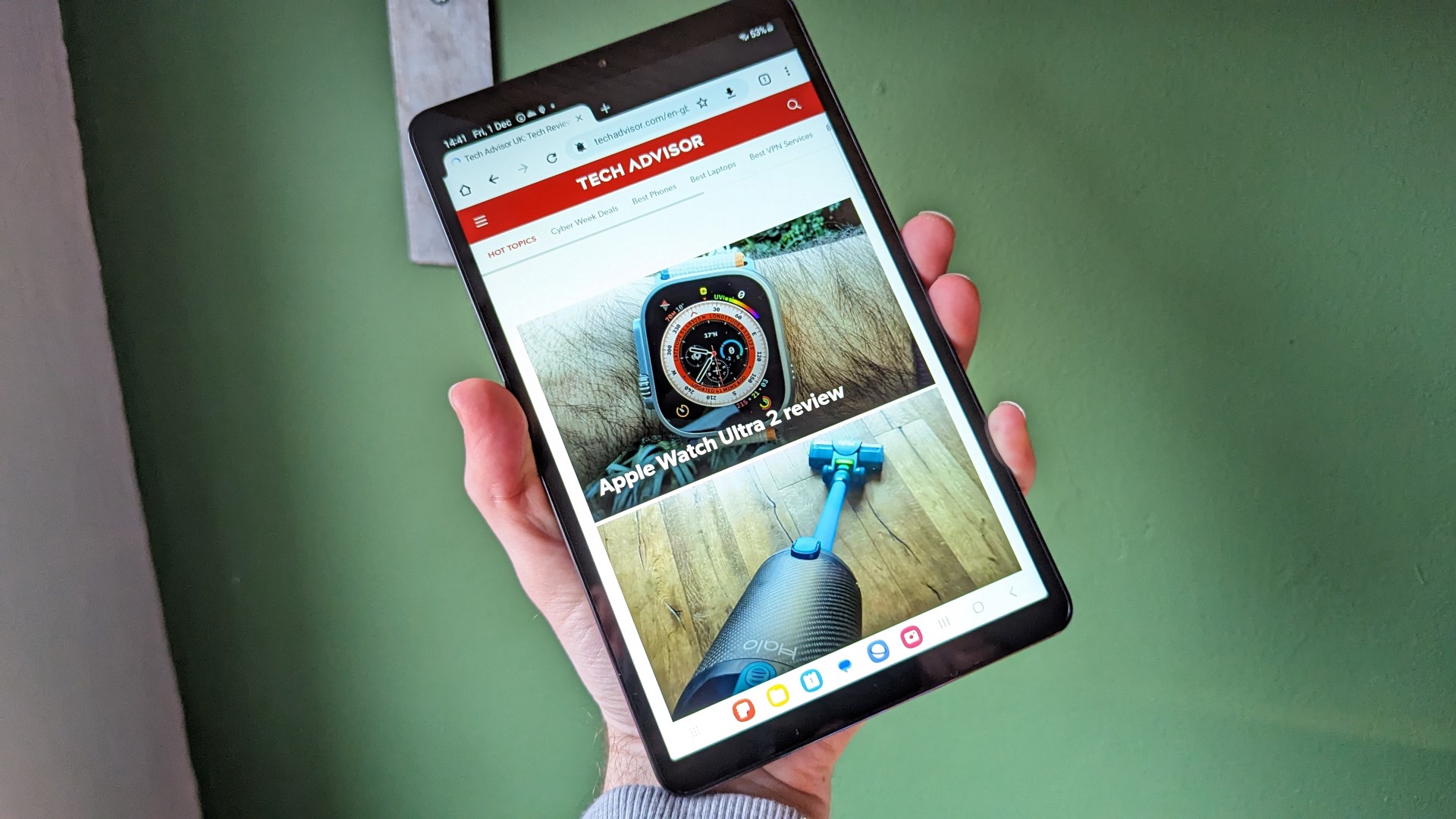
Pros
- Sleek, compact design
- Solid performance
- Great speakers
- Very affordable
Cons
- Slow charging
- Terrible cameras
- Blurry scrolling
- Not available in the US
If your budget is under £200 and you’re happy with an Android tablet, your decision is very simple – buy the Galaxy Tab A9. Sadly, it’s not available in the US.
Samsung’s latest cheap tablet is extraordinarily good value for money, combining strong performance with a solid 8.7-inch display, impressive quad speakers and even decent battery life. The One UI software isn’t quite as impressive as on Samsung’s phones, but it’s still one of the best versions of Android you’ll find on a tablet.
However, given it’s so cheap, it should come as no surprise that there are compromises. Scrolling often feels slow and looks blurry, while charging is only 15W, and the cameras are very disappointing.
But you aren’t buying this tablet for its photographic abilities. And it’s the fundamentals of a great tablet where the Galaxy Tab A9 excels.
If you’re willing to pay a little bit more for a bigger screen, consider the 11-inch Galaxy Tab A9+ instead.
Read our full
Samsung Galaxy Tab A9 review
8. Honor MagicPad 2 – Impressive Mid-Range Tablet
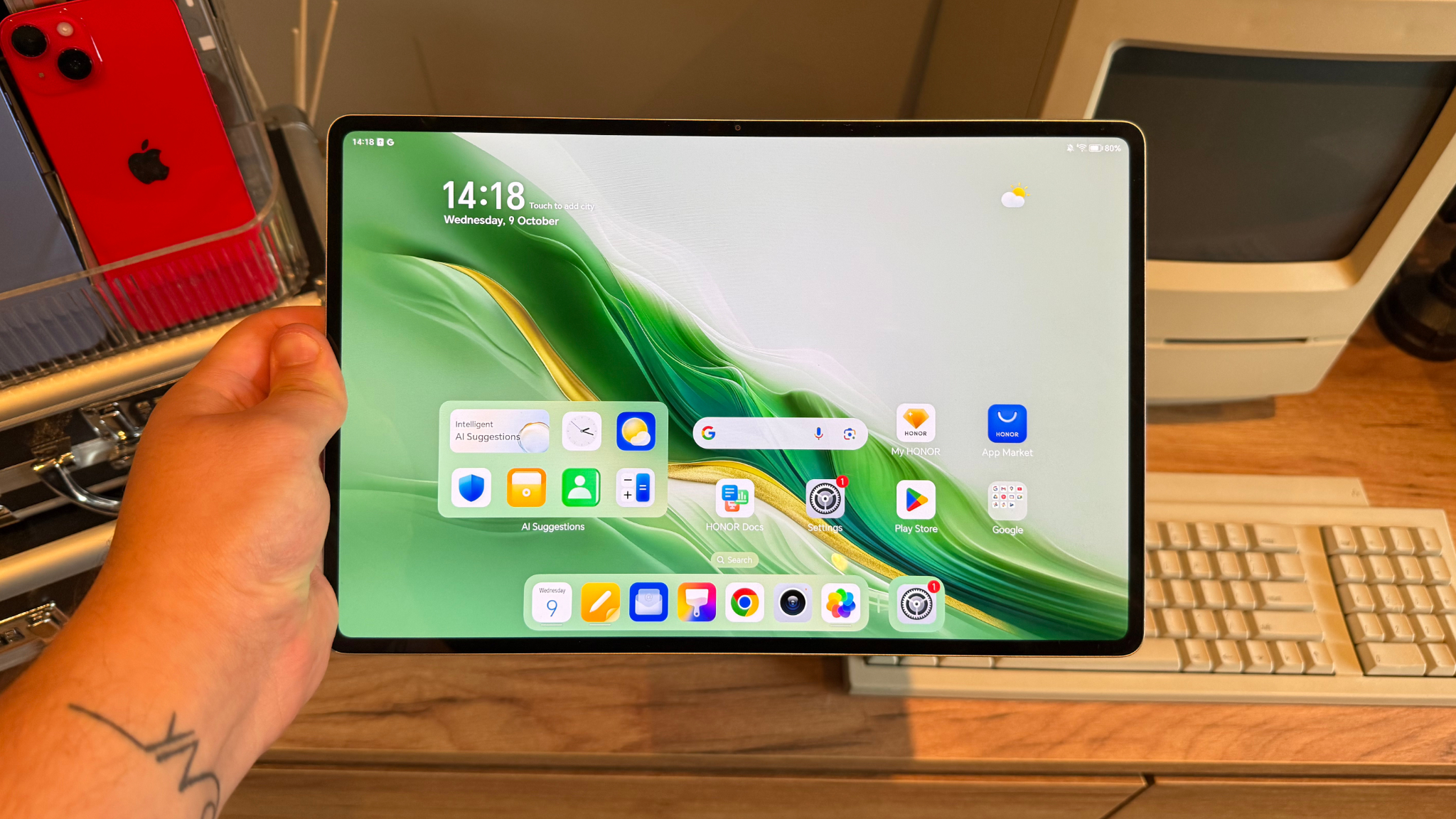
Pros
- Large 12.3-inch OLED display
- Manages to get very bright
- Smooth and reliable performance
- Productivity features that are actually helpful
Cons
- No IP rating for water or dust resistance
- Camera quality is limited
- Not available in the US
The Honor Magic Pad 2 offers an impressive value-for-money proposition in the Android tablet market.
Its 12.3-inch OLED display with 144Hz refresh rate is undoubtedly one of the best screens you’ll find in this price range, making it ideal for media consumption, gaming, and light productivity. The Snapdragon 8s Gen 3 chipset and 12GB of RAM deliver smooth performance, ensuring that the tablet can handle multiple tasks without lag.
While the lack of an IP rating and the absence of a trackpad in the keyboard case may limit its functionality for some users, the bundled Magic Pencil 3 and Smart Bluetooth Keyboard provide excellent value for those looking for a capable tablet at a reasonable price.
Whether you’re a student, professional, or casual user, the Honor MagicPad 2 is a well-rounded option.
Read our full
Honor MagicPad 2 review
9. Samsung Galaxy Tab S10+ – Best Alternative Flagship Tablet

Pros
- Stunning anti-glare screen
- Excellent speakers
- Speedy performance
- Useful Galaxy AI features
Cons
- Overpriced
- No charger included
- S Pen feels cheap
Price When Reviewed:
From $999.99
The Tab S10+ is overshadowed slightly by the top-of-the-line Ultra, but it’s an excellent tablet in its own right.
The combination of premium hardware and intuitive software is the best on any Android tablet, yet you avoid the exorbitant price tag of the Tab S10 Ultra.
Highlights include a gorgeous 12.4-inch AMOLED screen, excellent MediaTek Dimensity 9300+ performance and solid battery life from the 10,090mAh battery. Samsung’s One UI skin translates well to the bigger screen, while useful AI features and seven years of updates sweeten the deal.
The Tab S10+ isn’t perfect, while the 45W charger isn’t included in the box and the included S Pen isn’t particularly premium. But if you’re in the market for a big-screen tablet and don’t want to stretch to the Ultra, it’s still a strong choice.
Read our full
Samsung Galaxy Tab S10 Plus review
10. Apple iPad mini (2024) – Best Small Tablet
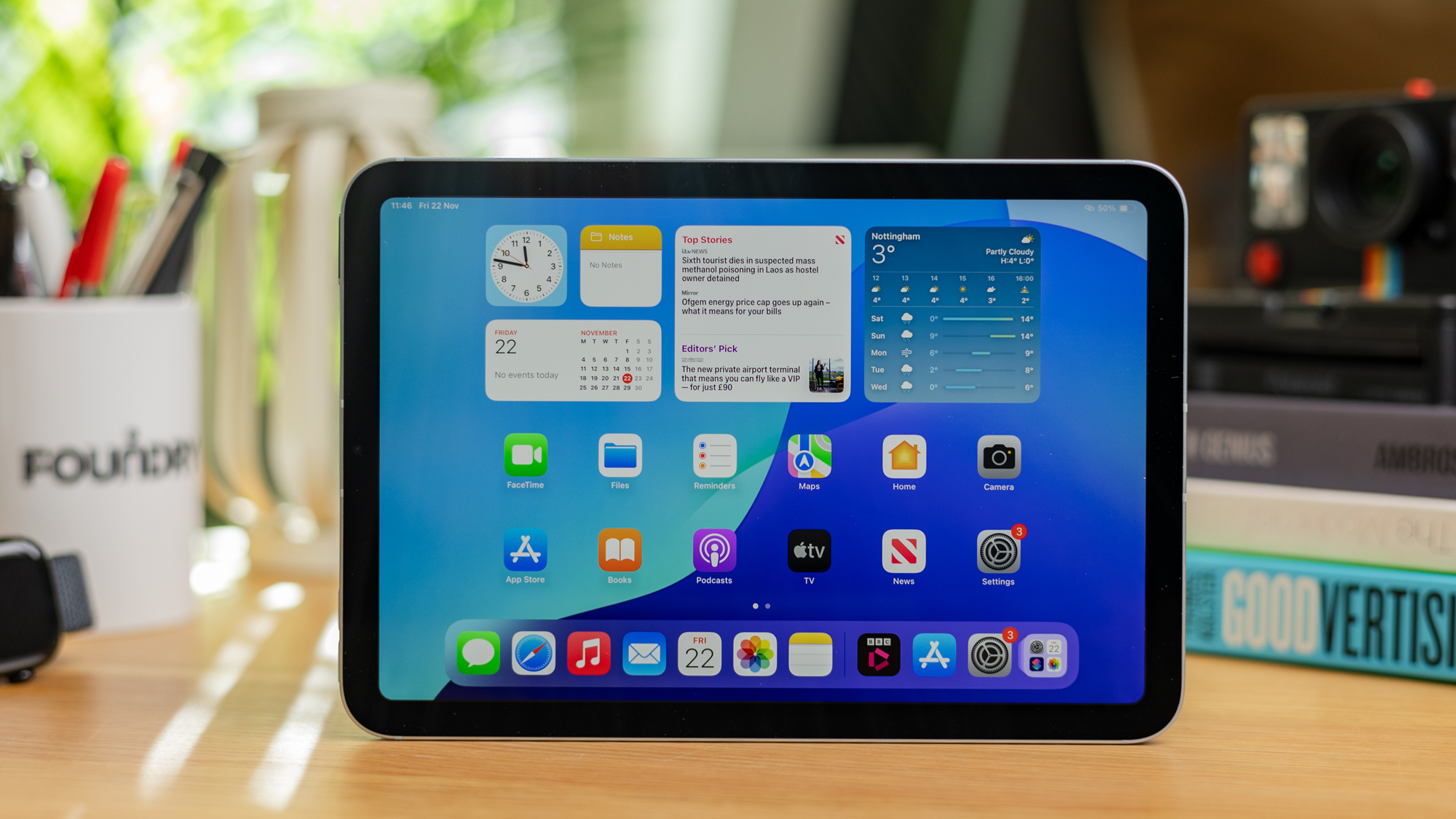
Pros
- Excellent build quality
- Compact and light
- Class-leading performance
- Feature-rich
Cons
- Expensive
- Slow charging
- 60Hz refresh rate
Price When Reviewed:
$499 (128GB; Wi-Fi only) | $599 (256GB; Wi-Fi only) | $799 (512GB; Wi-Fi only)
If you’re in the market for a small tablet, there’s still no better option than the iPad mini. This latest 2024 model offers the familiar iPad experience we’ve grown accustomed to in a device with a compact 8.3-inch panel.
The LED display itself is good, but nothing remarkable, offering a 1440p resolution but sticking at a 60Hz refresh rate. But it excels elsewhere, with superb performance from Apple’s A17 Pro chipset, brilliant build quality and the best tablet software around in iPadOS, especially with Apple Intelligence support now.
Unlike most Apple devices, the iPad mini doesn’t include Face ID, persisting with Touch ID built into the power button. The bezels are also very chunky and charging is slow, though solid battery life helps soften the blow.
Ultimately, the iPad mini is only suitable for people who want a small tablet with a lot of power. If that’s you, this is the best option on the market.
Read our full
Apple iPad mini (A17 Pro) review
Why you should trust Tech Advisor
Tablet reviews and buying advice have been a staple of Tech Advisor’s coverage since the original iPad and Samsung Galaxy Tab arrived in 2010.
We’ve seen tablet makers scramble to offer the biggest, brightest, highest-resolution, fastest-refreshing, toughest, displays; we’ve seen an arms race in processors and graphics in the quest for the ultimate portable performance; continued improvements to accessories and software to make for the best possible productivity experience; a push for batteries that can go – never mind all day – but all week; and new technologies that enable water resistance and vastly improve audio.
We’ve held your hand through a fascinating journey of tablet hardware, and today, some 15 years later, it’s the software smarts and once impossible-to-imagine AI capabilities that glue us to this path. We perform in-depth, real-world testing on every new tablet that’s worth buying, integrating it into our daily lives for the most authentic experience possible and making sure we are in a position to give you the best possible buying advice.
Tablets buying guide
What should I look for when buying a tablet?
When buying a tablet, there are lots of things to consider, including build quality, design, size, core specifications, operating system, features, performance, battery life and more.
Which elements are important to you depends on what you need a tablet for. For entertainment, you’ll likely want to prioritise a large, colourful screen and good speakers. For productivity, performance, battery life and accessories like a keyboard case are probably top of your list.
We have ranked the tablets above, but that doesn’t automatically mean the one in first place is the best suited to your needs.
Should I buy an Android, Windows or iPadOS tablet?
In the tablet world, you’ve got four main choices for operating systems: an iPad, an Android tablet, an Amazon Fire tablet or a Windows tablet.
Apple iPads run the company’s own iPadOS, which is widely regarded as one of the best out there. It’s easy to use and app developers usually make it their first choice, so you’re pretty much guaranteed to find what you’re after, whether it’s a banking app or the latest games.
If you have an iPhone, then it’ll also be very familiar. This is valuable when you buy accessories that require apps, mainly smart home or fitness gadgets, as you may not be able to control these from a Windows (or Fire) tablet.
In most cases, apps are made available on Android as well as iPads, but not always. Android tablets can be cheaper than iPads, but there are some Samsung models which cost the same or are more expensive.
Windows tablets come in both cheap and expensive guises, with the advantage of being able to support the same programs you’re likely already used to running on your laptop or PC. There just aren’t as many finger-friendly tablet-optimised apps as you’d find on your phone or an iPad.
And that’s why most Windows tablets come with a keyboard (or at least offer one as an optional accessory), they’re really a hybrid of a laptop and tablet. But as you’ll find out in most of our Windows tablet reviews, this is rarely a case of getting the best of both worlds. One exception is the Surface Pro line from Microsoft.
The fourth option is Amazon’s Fire tablets. These are based on open-source Android but are locked into Amazon’s own ecosystem, running on what’s called Fire OS. As such, you won’t find any Google services or apps on them natively, so bear this in mind. They are very affordable, though.
Bear in mind that some tablet makers use their own custom OS, such as the ReMarkable 2.
What is the best brand for tablets?
Apple is probably the brand most people think of first when it comes to tablets, thanks to the dominance of the iPad. If you can afford one and it ticks your boxes, then great, but there are reliable alternatives.
As mentioned, Amazon makes its own Fire Tablet range, but when it comes to Android and Windows slates, there are almost too many to choose from – although we are big fans of Microsoft’s own Surface devices, many of which are tablets.
Many of the top brands make both Windows and Android tablets, and we’d recommend looking at devices from the likes of Samsung, Lenovo, Asus and Xiaomi. Other brands include Huawei, Nokia, Realme and OnePlus.
How much should I spend on a tablet?
You’ll also need to decide how much to spend. Devices can go beyond the $1,000/£1,000 mark if you buy a premium device in a high-spec model.
Of course, you can spend a lot less than that. We’ll often have cheaper models in this round-up, but we also have a dedicated list of the best budget tablets if you’re on a budget.


































